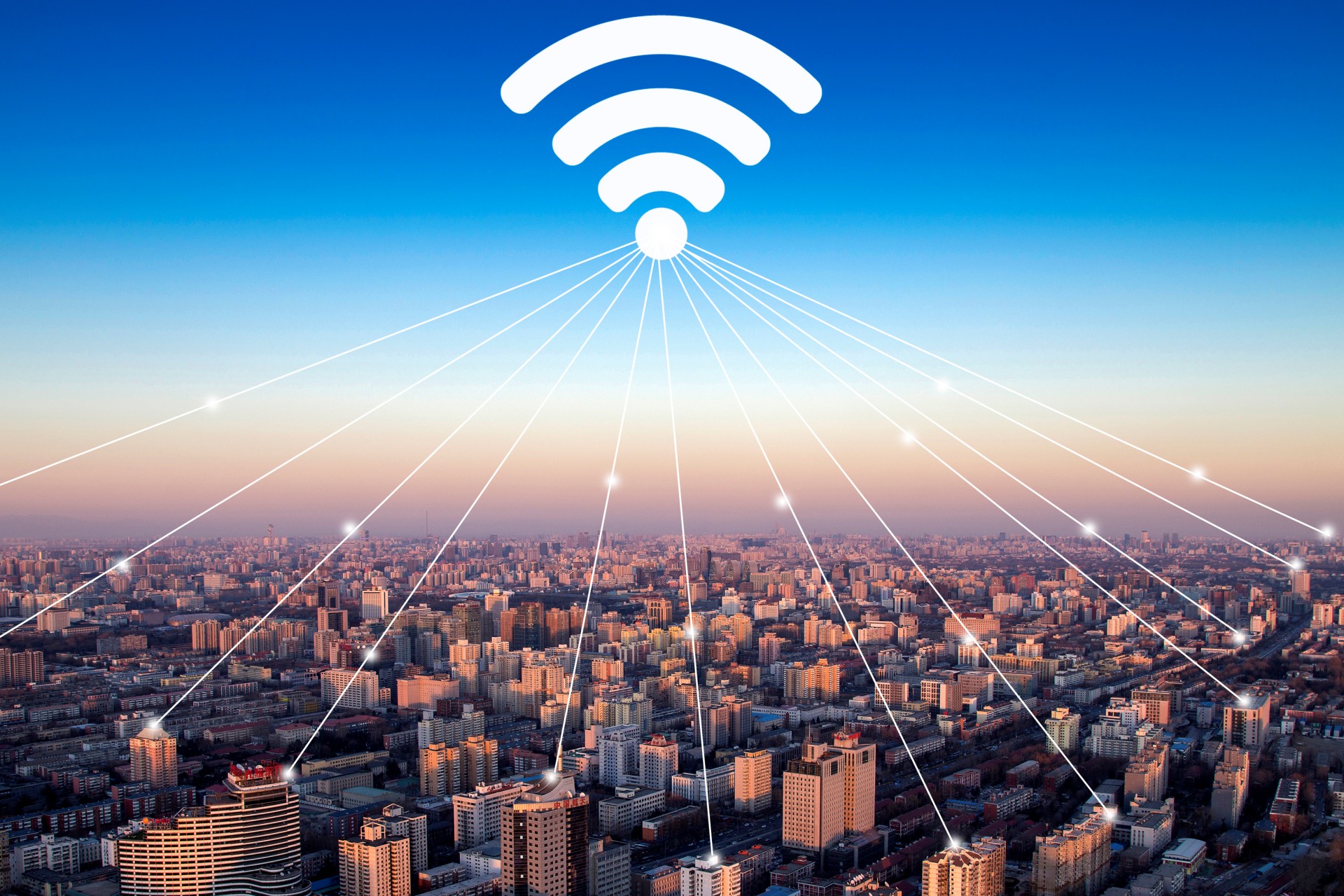How to balance Wi-Fi 7 and future 5G/6G development?

How to balance Wi-Fi 7 and future 5G/6G development?
With the progress of society, people's demand for information technology continues to increase. At present, new technologies such as the Internet, big data, cloud computing, artificial intelligence, and blockchain are undergoing profound evolution. Industrial digitalization, intelligence, and green transformation are accelerating. Smart industries and the digital economy are booming, which has greatly changed the global allocation of factor resources. Industrial development model and people’s lifestyle. As the ability to provide basic information and communication network access services, Wi-Fi 7, 5G and even future 6G technologies are also expanding new goals and application scenarios to adapt to new requirements put forward by industrial development and changes.

Wi-Fi 7 is coming
Wi-Fi technology is a wireless access technology based on a series of standard protocols under the IEEE 802.11 system. It has developed from simply solving terminal wireless access needs in the early days to now being able to meet a large number of terminal connections in different scenarios such as homes and supermarkets. Simple authentication and high-speed application requirements. The latest generation of Wi Fi 7 technology has developed a D1.5 draft in 2022, and plans to release the D5.0 official version in 2024. Wi-Fi 7 aims to support higher speeds, more access terminals, and higher resource utilization. It introduces the 6GHz frequency band based on the previous generation technology, increasing the maximum bandwidth from 160MHz to 320MHz, and the maximum spatial flow remains 8 ×8 MIMO (according to the latest IEEE 802.11be D3.1 draft, Wi-Fi 7 is still 8×8 MIMO) and supports 4096QAM modulation technology, thus increasing the theoretical maximum rate of a single stream to 2.88Gbit/s, and the overall device theory The throughput rate reaches 23.06Gbit/s (8×8 MIMO). At the same time, in order to further improve resource utilization and device throughput capabilities, Wi-Fi 7 introduces multi-link transmission technology (MLO), which allows terminal devices to transmit data across multiple frequency band channels at the same time. This can be understood as the user's mobile phone terminal can simultaneously connect to the router's 2.4GHz, 5GHz or even 6GHz frequency bands, and automatically switch channels according to wireless environment conditions (such as interference, resource occupation, etc.) to comprehensively improve the user experience. To give a simple example, assume that the interference of the 5GHz channel in a home is relatively small. A user in the home is using a mobile phone to connect to the 5GHz channel to play games. At this time, other users in the home suddenly start using the 5GHz channel to download files, causing a shortage of 5GHz band resources. Then The mobile phone of the user playing the game will automatically switch to the 2.4GHz or 6GHz frequency band according to the network conditions to ensure business delay and effective data transmission; when the download of other users’ files is completed, the mobile phone of the user playing the game will automatically switch back to the 5GHz frequency band with less interference. frequency band to ensure user experience.
Comprehensive application of 5G and launch of 6G research and development
3GPP has formulated 5G wireless communication standards to promote the industry to bring high-speed, high-reliability, and low-latency network connections to users. The main application scenarios of 5G include enhanced mobile broadband (eMBB), ultra-reliable low-latency communications (uRLLC) and massive machine type communications (mMTC). It is the mobile network of choice for smart cities, smart healthcare, smart logistics and industrial Internet applications. eMBB guarantees mobile broadband rates in the Gigabit range and higher data bandwidth; uRLLC ensures ultra-high reliability and low-latency communication of less than 4 milliseconds; and mMTC supports large-scale device connections in IoT applications. Currently, 5G rates continue to increase, and some operators can provide transmission rates up to 10Gbit/s; latency continues to decrease, to less than 1 millisecond; new frequency bands are constantly being applied, such as C-band and millimeter-wave frequency bands, which can provide more bandwidth and better performance. As of the end of May 2023, my country has built a total of 2.844 million 5G base stations and more than 2.05 billion mobile IoT end users, fully supporting the digital and intelligent transformation of the industry.
As the future evolution direction of wireless mobile communication technology, 6G technology is still relatively far away for the general public, but the start button of 6G technology has been pressed. From June 12 to 22, 2023, the 44th meeting of the International Telecommunication Union Radiocommunication Sector Working Group 5D (ITU-R WP5D) was held in Geneva, Switzerland, and the "Recommendation on the Framework and Overall Goals of IMT for 2030 and Future Development" was released (hereinafter referred to as the "Proposal"). As a 6G programmatic document, the "Recommendation" brings together the global 6G vision consensus, describes 6G goals and trends, and proposes 6G typical scenarios and capability indicator systems. The "Recommendation" clarifies that the six major scenarios of 6G network are immersive communication, ultra-large-scale connection, extremely high reliability and low latency, the integration of artificial intelligence and communication, the integration of perception and communication, and ubiquitous connection. The "Recommendation" clarifies 15 key capability indicators of 6G, which are enhancements and dimensional expansions of 5G's key capabilities. Nine of them are enhancements relative to 5G capabilities, including peak rate, user experience rate, spectrum efficiency, regional traffic, Indicators such as connection density, mobility, latency, reliability, security and privacy elastic performance; 6 new capabilities include coverage capabilities, perception-related capabilities, AI-related capabilities, sustainability, interoperability, and positioning accuracy. It can be said that 6G technology anchors various communication needs that meet people's future digital social life under ubiquitous intelligence.
Wi-Fi 7 will complement 5G/6G’s advantages
From the perspective of future technology development, although Wi-Fi 7 and 5G/6G both support larger bandwidth, more access terminals, and lower latency, and both use increasingly higher-level multiple-input multiple-output (MIMO) technology and wider spectrum bandwidth to improve performance, and there is indeed a certain competitive relationship between the two in terms of competition for spectrum resources and investment in network construction by communication operators; but in fact, Wi-Fi 7 and 5G/6G technology-anchored applications There are significant differences in scenarios and user communication needs, and the technical and application advantages of the two in their respective target scenarios are also obvious. In the future, these two technologies will coexist for a long time, and unlike past generations of wireless technology, it will no longer be an "either/or" choice.
The main goal of Wi-Fi 7 is to provide terminal wireless broadband access in indoor fixed areas. Its essence is to provide higher, more stable and reliable access rates for more terminals. Moreover, Wi-Fi technology currently still mainly considers the different access rates of terminals in the domain. Roaming between access points does not yet involve the issue of mobility handover of access terminals between different domains. Typical application scenarios of Wi-Fi 7 are WLAN networks in shopping malls, airports, stations, theaters, stadiums, and factories, especially home broadband networks for mass users. Wi-Fi technology can provide low-cost, high-speed access solutions .
5G/6G technology solves the problem of wireless broadband access under mobility, especially for future 6G networks. Its main application scenarios include: industry applications with high reliability and deterministic latency, such as smart factories, smart medical, and smart Mines, smart ports, etc.; low-latency, ultra-large bandwidth services for applications such as the Yuanverse and virtual reality; oriented to high-speed mobile scenarios such as high-speed trains, airplanes, and automobiles to meet relatively stable high-bandwidth access requirements; oriented to all-things intelligent connected scenarios High-density, ultra-large-scale terminal access requirements; space-ground integrated ubiquitous interconnection requirements for aviation, aerospace, navigation, and land areas.
The 6G network aims to provide a data transmission rate of 1Tbit/s, and Wi-Fi 7 aims to reach a peak rate of 46Gbit/s. It should be noted that these target peak rates correspond to specific coverage areas. The service range of a Wi-Fi hotspot may only be 50 meters indoors and 300 meters outdoors. When multiple hotspots are networked, it can be used in supermarkets, airports, etc. Coverage of medium-sized areas; while the service range of cellular networks ranges from 300 meters in small communities to tens of kilometers in large communities, and within the overall coverage of the 6G network, devices can move freely and business services are uninterrupted. In addition, 6G aims to provide global coverage through non-terrestrial and satellite networks, thereby achieving a coverage scale of 100 kilometers.
As the most promising new wireless technologies in the future, Wi-Fi 7 and 6G have their advantages and disadvantages in different application scenarios. If you want to achieve long-distance wide coverage, high speed and free movement, 6G is a better choice; if you need to achieve higher download speeds and maintain lower power consumption in a small space such as an office building or home, Wi-Fi 7 may be a better choice. For ordinary users' home application scenarios, Wi-Fi 7 is also a better choice from the perspective of construction and use costs. Of course, Wi-Fi 7 and 6G networks, which are the access part, can interconnect with various edge cloud resources and AI computing resources through intelligent metropolitan area networks in the future, making full use of and exerting the overall capabilities of the computing network.
Conclusion
Judging from the current technological progress, Wi-Fi 7 will arrive earlier than 6G, but all parties in the industry still need to do a lot of work to promote the popularization of Wi-Fi 7 as soon as possible. The first is in terms of chips. Although Qualcomm, MediaTek and other manufacturers have launched Wi-Fi 7 chip solutions in 2022, there are still very few terminals that support Wi-Fi 7, and it is expected that the time to market may lag behind. Therefore, all aspects of the industry need to The parties will work together to promote the pilot and demonstration applications of Wi-Fi 7. At the same time, in terms of frequency band allocation, the second half of the domestic 6GHz (6 425-7125MHz) has been allocated to 5G/6G systems, while the 500MHz frequency band of 5925-6425MHz is still unclear. It is hoped that it can be divided into unlicensed frequency bands for Wi-Fi in the future. -Fi 7 is used to ensure continuous 320MHz spectrum resources and provide relatively low-cost wireless broadband access services to the majority of users.